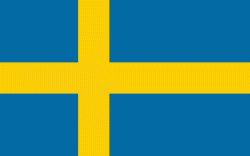Nykvarn Municipality (Nykvarns Kommun)
Nykvarn Municipality (Nykvarns kommun) is a municipality in Stockholm County in east central Sweden. Its seat is located in the town of Nykvarn.
Nykvarn is a young municipality, and is the result of the splitting of Södertälje Municipality in 1999. Nykvarn can be regarded as a totally new municipality, because there was never before an entity with that territory or that name.
The municipality has a significant population increase in the summer thanks to tourism.
Nykvarn is located between the two cities Södertälje and Strängnäs, and many citizens of Nykvarn work in either.
Archeological finds show the area to have been inhabited for about 5,000 years, similar to its neighbouring municipalities around Lake Mälaren.
Besides graves from the Stone Age, there is also an interesting runestone that can be visited that is listed in the Rundata catalog as Sö 338. It currently resides in the Turinge church, a church that has a history dating back to around the year 1100. This runestone has a very long inscription.
A newer sight is the Taxinge-Näsby Castle, which was begun sometime in or before the 14th century, by Bo Jonsson Grip. The castle has its current facade in the empire style from 1813. Many celebrities have during the centuries visited or stayed at the castle, including Carl Michael Bellman in the 18th century and August Strindberg in the 19th century.
Nykvarn is a young municipality, and is the result of the splitting of Södertälje Municipality in 1999. Nykvarn can be regarded as a totally new municipality, because there was never before an entity with that territory or that name.
The municipality has a significant population increase in the summer thanks to tourism.
Nykvarn is located between the two cities Södertälje and Strängnäs, and many citizens of Nykvarn work in either.
Archeological finds show the area to have been inhabited for about 5,000 years, similar to its neighbouring municipalities around Lake Mälaren.
Besides graves from the Stone Age, there is also an interesting runestone that can be visited that is listed in the Rundata catalog as Sö 338. It currently resides in the Turinge church, a church that has a history dating back to around the year 1100. This runestone has a very long inscription.
A newer sight is the Taxinge-Näsby Castle, which was begun sometime in or before the 14th century, by Bo Jonsson Grip. The castle has its current facade in the empire style from 1813. Many celebrities have during the centuries visited or stayed at the castle, including Carl Michael Bellman in the 18th century and August Strindberg in the 19th century.
Map - Nykvarn Municipality (Nykvarns Kommun)
Map
Country - Sweden
 |
 |
| Flag of Sweden | |
Nature in Sweden is dominated by forests and many lakes, including some of the largest in Europe. Many long rivers run from the Scandes range through the landscape, primarily emptying into the northern tributaries of the Baltic Sea. It has an extensive coastline and most of the population lives near a major body of water. With the country ranging from 55°N to 69°N, the climate of Sweden is diverse due to the length of the country. The usual conditions are mild for the latitudes with a maritime south, continental centre and subarctic north. Snow cover is infrequent in the densely populated south, but reliable in higher latitudes. Furthermore, the rain shadow of the Scandes results in quite dry winters and sunny summers in much of the country.
Currency / Language
| ISO | Currency | Symbol | Significant figures |
|---|---|---|---|
| SEK | Swedish krona | kr | 2 |
| ISO | Language |
|---|---|
| FI | Finnish language |
| SE | Northern Sami |
| SV | Swedish language |















